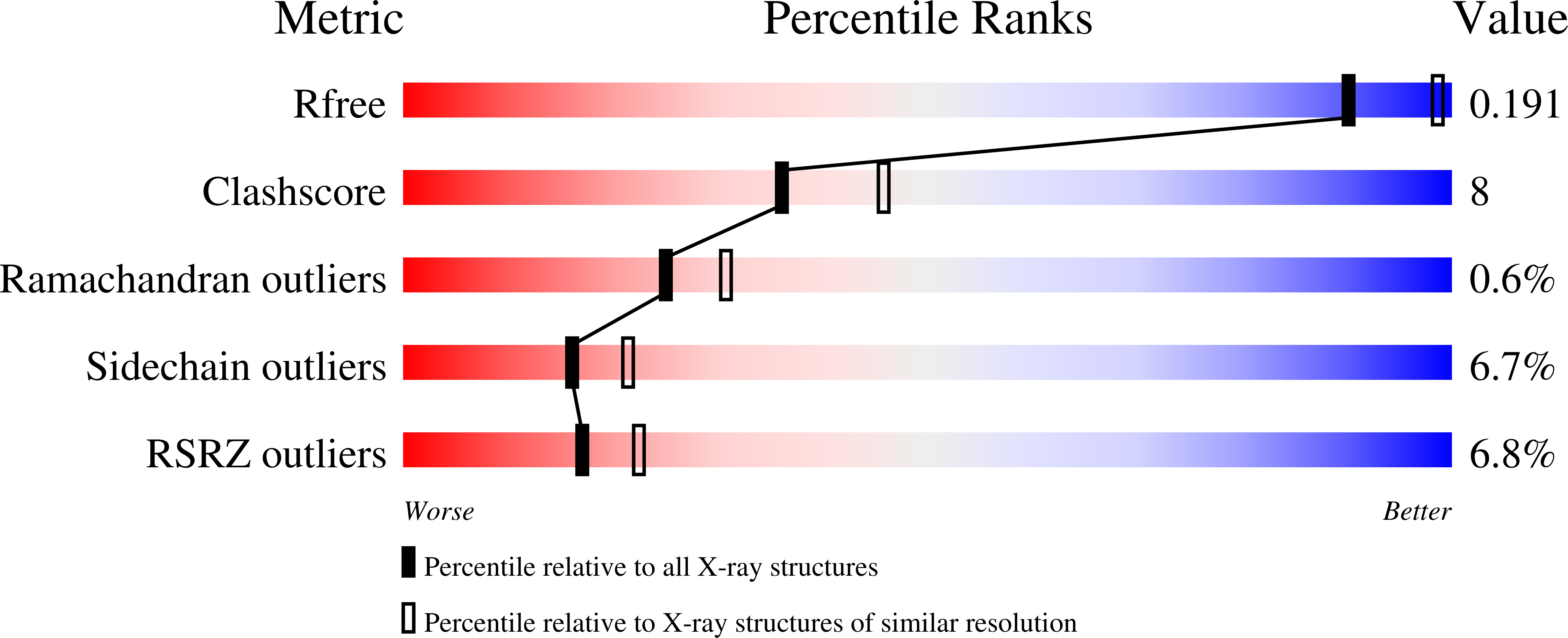The product complex of M. tuberculosis malate synthase revisited.
Anstrom, D.M., Remington, S.J.(2006) Protein Sci 15: 2002-2007
- PubMed: 16877713
- DOI: https://doi.org/10.1110/ps.062300206
- Primary Citation of Related Structures:
2GQ3 - PubMed Abstract:
Enzymes of the glyoxylate shunt have been implicated as virulence factors in several pathogenic organisms, notably Mycobacterium tuberculosis and Candida albicans. Malate synthase has thus emerged as a promising target for design of anti-microbial agents. For this effort, it is essential to have reliable models for enzyme:substrate complexes. A 2.7 Angstroms resolution crystal structure for M. tuberculosis malate synthase in the ternary complex with magnesium, malate, and coenzyme A has been previously described. However, some unusual aspects of malate and Mg(++) binding prompted an independent determination of the structure at 2.3 Angstroms resolution, in the presence of saturating concentrations of malate. The electron density map of the complex reveals the position and conformation of coenzyme A to be unchanged from that found in the previous study. However, the coordination of Mg(++) and orientation of bound malate within the active site are different. The revised position of bound malate is consistent with a reaction mechanism that does not require reorientation of the electrophilic substrate during the catalytic cycle, while the revised Mg(++) coordination is octahedral, as expected. The results should be useful in the design of malate synthase inhibitors.
Organizational Affiliation:
Institute of Molecular Biology, Department of Chemistry, University of Oregon, Eugene, 97403, USA


















